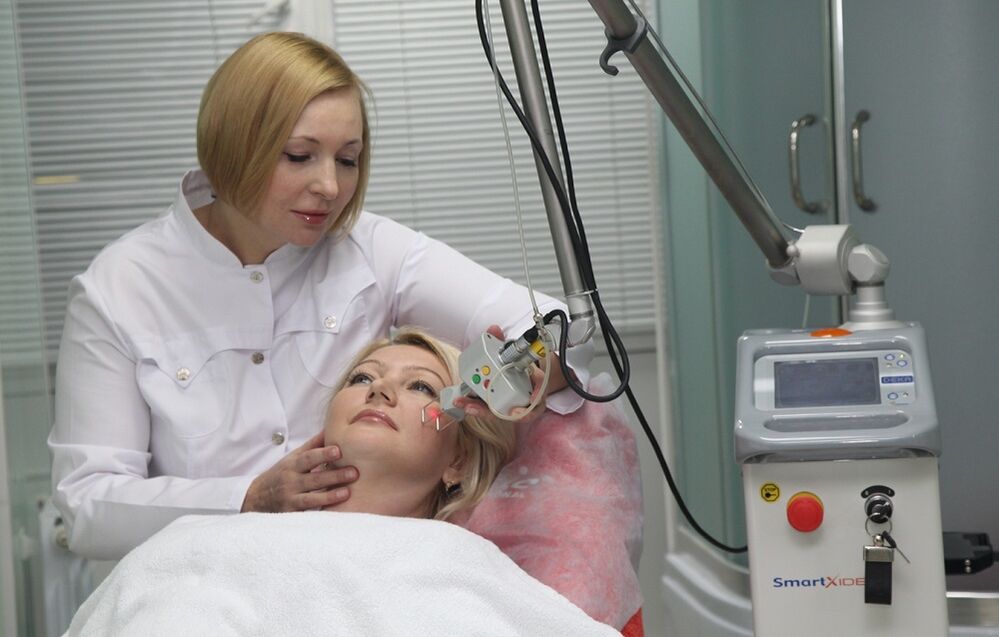Every woman wants to have perfectly smooth and youthful skin without any wrinkles. Over the years, the skin's ageing process becomes more active and therefore loses elasticity and firmness rapidly. Fractional laser rejuvenation will help restore skin quality. Heat exposure during surgery activates cell growth, ensures the production of collagen fibers and the elimination of dead skin layers.
working principle
Partial rejuvenation with laser - what is it? For this reason, experts call skin resurfacing using the high temperatures provided by a laser beam. The principle of operation of the technique is similar to that of laser resurfacing, but it has deeper effects and possibly complex consequences. The device for this procedure is small and it is equipped with photocells that ensure the penetration of the laser beam into the tissue. The specialist pushes the device through the patient's skin very quickly, otherwise burns may occur.
type
Experts distinguish between ablative and non-ablative types of laser partial rejuvenation. Ideally, a combination of these two exposures is recommended.
ablative
Using an ablative type of facelift without surgery helps to resurface the dead layers of skin cells. This option allows you to eliminate the first signs of aging. The procedure acts on the skin to activate the growth of healthy new cells, tighten, even out the complexion and smooth out wrinkles.
non-ablative
Non-ablative laser rejuvenation is used in cases of irreversible changes in the skin. This option allows you to affect the deep layers, eliminate pathological processes in the skin, promote cell regeneration and the formation of membrane frameworks, activate the production of collagen fibers.
Indications
- loose, sagging skin;
- Presence of hyperpigmentation, acne, enlarged pores;
- The presence of scars, rosacea (spider veins), streaks (stretch marks);
- The presence of facial wrinkles, "crow's feet" around the eyes.
Contraindications
Experts do not recommend laser skin rejuvenation in the following situations:
- allergic reactions, the presence of skin infections;
- The presence of inflammation, psoriasis in the area affected by the plan;
- epilepsy;
- The presence of malignancy in the planned affected area.
preparation period
Before partial rejuvenation, it is necessary to stop:
- A course of tetracycline-based antibiotic therapy;
- use of alcohol-based cosmetics;
- Visit the beach, solarium (refusal to sunbathe a few weeks before surgery).
how it works

All operations within the framework of laser rejuvenation are performed under local anesthesia. During the procedure, the patient may experience discomfort. The whole process takes about half an hour.
Special goggles are in front of the patient during operation of the device. Remember: The exposure level and intensity of surgery are chosen individually by the specialist for each patient. The course mainly consists of 7 lessons. This is enough to smooth out even deep scars and remove most wrinkles.
Effect
After partial rejuvenation, patients experience pain immediately, even with painkillers and medications. After about 3 hours, the skin becomes red and slightly swollen (maximum on day 2), especially on the nose, around the eyes, and on the upper eyelid. To reduce swelling, you need to drink diuretics and reduce the amount of salty food.
The next day, pus is abundant, and a crusty skin appears on the face, which hardens by the end of the day (no touch, nor attempts to remove, scars full of infection and appearance). After a while, it will become softer and go away on its own (using a skin rejuvenation product can help).
After about a week, the swelling on the face stopped, but after about a month, the skin was still noticeably pink. When going out, a compound with sun protection factor (at least SPF 30) is required, and a vitamin intake is recommended. Sunbathing and the use of exfoliants (scrubbing, exfoliating, exfoliating) are prohibited.
Usually, after 3-6 months, the experts have a second meeting and all the consequences will have to be shifted again.
























